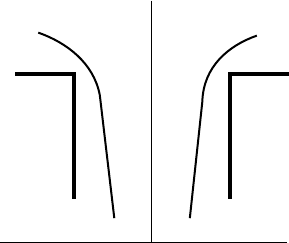
SECTION 5 MEASUREMENT
5.3 Measuring the 2-signal Selectivity
In the conventional method of measuring the selectivity of one signal in the output fixing method, the input signal
level had to be changed in a large range from about 0 dBm to about 100 dBm. It is generally difficult to operate each
part of the amplifier of the receiver according to such a large change of the level. The amplifier normally operates in
the 10 dB change range; however, in the higher range, an error occurs in the measured value because the sensitivity
reduces by the saturation, etc.
To measure the sensitivity in the actual reception state, the 2-signal selectivity (also called effective selectivity) is
provided. This sensitivity directly indicates the interference resolution of the receiver, that it, it indicates the maximum
level of the allowable input of the disturbing wave when suppressing the disturbing output level of the receiver to a
fixed value during reception of the desired wave. There are the following three types of 2-signal sensitivities:
• Sensitivity blocking (suppression)
• Cross-modulation
• Inter-modulation
This section explains the sensitivity blocking and cross-modulation.
5.3.1 Measuring the sensitivity blocking of the FM receiver
The desired and disturbing waves are indicated by a disturbing
wave input level when the noise suppression is set to 20 dB by
applying the desired input voltage (higher by 6 dB than the
input voltage of the receiver required to set the noise suppression
to 20 dB) and supplying a disturbing wave separate from the
desired wave by ∆f kHz.
Change the frequency of the disturbing wave and measure the
disturbing wave input level; the characteristics are obtained as
shown in this figure.
In this paragraph, to explain the measurement procedure, the desired wave is set to 154.45 MHz and the disturbing
wave is separated from it by ±20 kHz × n.


















